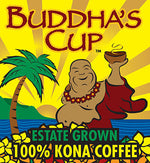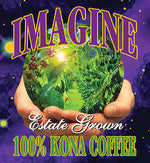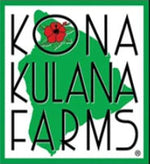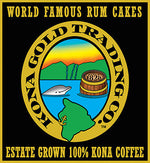One of the most common questions we receive from coffee enthusiasts is: What is the difference between iced coffee and cold brew?
At Buddha's Cup, we're passionate about delivering exceptional coffee experiences, and that starts with understanding the nuances between various brewing methods.
In this blog post, we'll dive into the unique characteristics of these two popular cold coffee beverages.
Brewing Method Distinction

The brewing process is where the magic begins, and it's the first thing that sets iced coffee and cold brew apart.
When brewing iced coffee, we focus on hot extraction methods. This means that we brew coffee using hot water, similar to how you'd make a regular cup of joe.
Once brewed, the coffee is then cooled down and poured over ice, creating a refreshing and familiar iced coffee taste.
On the other hand, cold brew involves cold extraction, which means that coffee grounds are steeped in cold water for an extended period.
This slow and patient process extracts flavors differently from hot water, resulting in a unique flavor profile that many coffee lovers adore.
Extraction Time Comparison

Cold Brew's Extended Steeping
The secret to cold brew's distinct flavor lies in its extended steeping time.
Cold brew is prepared by allowing coffee grounds to steep in cold water for an extended period, typically around 12 to 24 hours.
This prolonged extraction lets the flavors develop slowly, giving a smooth, mellow taste with lower acidity and bitterness.
Iced Coffee's Swift Preparation
In contrast, iced coffee is brewed faster.
Techniques such as pour-over and espresso help create a strong coffee concentrate that's then cooled down with ice.
While this method doesn’t offer the same rich flavor as cold brew, it's perfect for those who need a quicker coffee fix.
Impact on Flavor Development
The extraction time determines the flavor profile of both beverages.
Cold brew's extended steeping period brings out a bold flavor, highlighting the coffee's natural sweetness and minimizing the acidic and bitter notes.
Iced coffee's shorter extraction time holds on to more of the traditional coffee flavors, giving a similar taste to your regular hot coffee.
Not only that, the type of coffee bean and its origin have a big influence on taste.
For instance, a fruity African bean will have a refreshing tang when used in cold brew, while a full-bodied South American bean might offer a more chocolaty profile when brewed as iced coffee.
Flavor Profile Differences
One huge difference between cold brew and iced coffee is the flavor profile.
Cold brew's longer extraction time and cold water steeping process make the drink smoother, less acidic, and less bitter.
The flavor is often described as round and full-bodied, making it excellent for those who prefer a milder coffee taste.
Here at Buddha’s Cup, we have all your gourmet coffee needs covered.
Concentration Levels

Cold brew's extended steeping not only affects the flavor but also the concentration levels. It tends to be more concentrated than regular coffee, which means it’s quite strong.
To really enjoy a cold brew, try diluting it with water, milk, or ice.
Because of its stronger nature, it stays flavorful even as ice melts, making it the perfect drink on a hot day.
Smoothness and Boldness
The smoothness of cold brew is one of its defining characteristics.
Due to the extended steeping process, cold brew has a silky texture and a less intense flavor profile compared to iced coffee.
With this smoothness, you can experiment with different additives and flavors, creating a more personal coffee experience.
Check out our Coffee Club for a monthly supply of fresh coffee delivered to your doorstep!
Brewing Equipment Variance
When it comes to brewing equipment, both cold brew and iced coffee have their own special tools.
Cold brew requires a specific cold brew maker or a jar for steeping, along with a filtration method to separate the coffee grounds.
Iced coffee can be brewed using standard coffee makers or manual methods like pour-over.
Chilling Techniques
Iced coffee is brewed hot and then cooled down by pouring it over ice, which instantly chills the beverage.
While pouring hot coffee over ice cools it right away, it also instantly dilutes it.
A workaround for this is using coffee ice cubes for your iced coffee. That way, even as the ice melts, the drink isn’t watered down and stays delicious.
Cold brew is chilled during its extended steeping process, leaving a naturally cold and refreshing drink without the need for more ice.
Versatile Brewing Ratios
The beauty of both brewing methods is adaptability.
Cold brew concentrate can be customized to achieve various strengths by adjusting the brewing ratio. Feel free to play with different coffee-to-water ratios to find your perfect balance of flavor and strength.
Iced coffee can also be adjusted to your preferred strength by changing the amount of coffee and water used during brewing.
In addition, the grind size can be tinkered with. A slightly finer grind will create a stronger flavor for both brew methods, but remember to monitor the steeping time to prevent over-extraction.
Serving Styles and Presentation

Visual appeal changes the way you enjoy a cup of coffee.
Both cold brew and iced coffee offer unique presentation styles that take your overall experience to the next level.
Visual Appeal and Glassware Choices
Finish off your coffee creation by presenting it in the right glassware.
Cold brew's dark and rich color looks stunning in clear glass containers. Iced coffee, with its lighter hue, shines when served in pretty glassware that shows the layers of the drink.
Garnishes and Additions
Garnishes and additions elevate your coffee presentation, adding both visual and flavor points to your drink.
For both cold brew and iced coffee, you have the creative freedom to add garnishes like whipped cream, chocolate shavings, or a drizzle of syrup.
If your diet is plant-based, try adding almond milk, oat milk, or soy milk.
Natural sweeteners like agave nectar, honey, or maple syrup can also sweeten the drink without using refined sugars.
Iced Coffee Variations: Layers and Artistry
Baristas often take iced coffee to the next level by creating visually stunning layered variations.
These artistic creations show the different layers of coffee and milk – perfect for an Instagram shot.
They use special pouring techniques to achieve these layers, making each sip a delightful visual and taste experience.
Conclusion

In the end, what is the difference between iced coffee and cold brew boils down to their brewing methods, extraction times, flavor profiles, and even presentation. Both options have their merits, and your choice depends on your preferences and mood.
Whether you prefer the smoothness and mellowness of cold brew or the familiar flavors of iced coffee, we're here to provide you with exceptional coffee that suits your taste.
To explore our premium coffee selections and find the perfect fit for your palate, visit our Coffee Club.
If you have any questions or want to learn more about our coffee, don't hesitate to contact us.
Frequently Asked Questions (FAQs)
Does cold brew have more caffeine than iced coffee?
Yes, cold brew typically has more caffeine than iced coffee. This difference in caffeine concentration is due to the brewing methods of the two beverages. If you're looking for a caffeine boost, cold brew might be your go-to choice.
Is cold brew stronger than iced coffee?
Yes, cold brew is stronger in terms of caffeine content when compared to iced coffee. The extended steeping process of cold brew allows for a higher extraction of caffeine from the coffee grounds, giving a coffee concentrate that is richer in caffeine.
What is the difference between iced coffee and cold brew?
Iced coffee is made by brewing coffee using hot water and then quickly cooling it down by pouring it over ice. The flavors are similar to regular hot-brewed coffee but with a refreshing chill. On the other hand, cold brew is made by steeping coarsely ground coffee beans in cold water for an extended period, often overnight. This slow extraction process produces a smoother, less acidic, and more concentrated coffee that's known for its unique flavor profile.
Can I heat up cold brew?
While cold brew is usually enjoyed as a chilled beverage, there's no hard and fast rule against heating it up. If you’re craving a warm cup of coffee but only have a cold brew on hand, you can definitely heat it up. However, heating cold brew may change its flavor.
Can I add milk or cream to cold brew and iced coffee?
Absolutely! Adding milk, cream, or other milk options is a fantastic way to customize both cold brew and iced coffee to your liking. The creamy and rich texture of dairy or nondairy milk will complement the coffee's flavors flawlessly. In cold brew, the smooth and mellow characteristics pair very well with milk, giving the perfect contrast. Similarly, iced coffee's bold flavors can be balanced out by the creaminess of milk.













